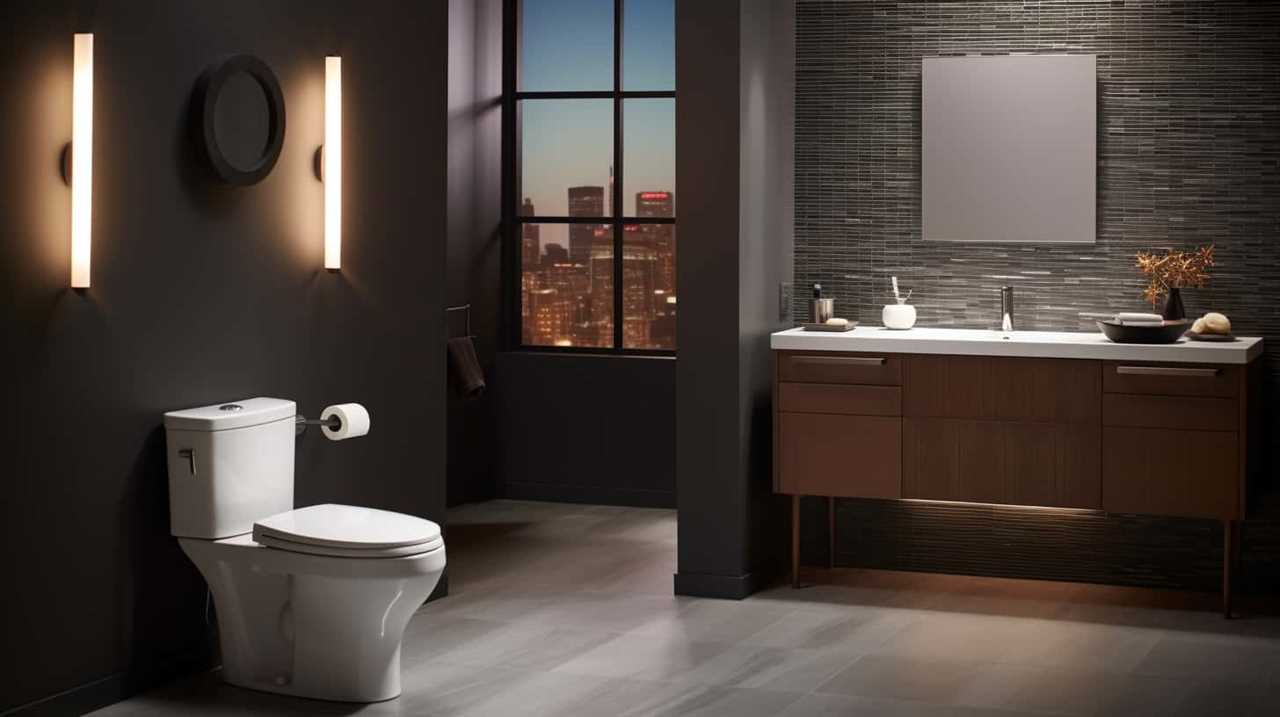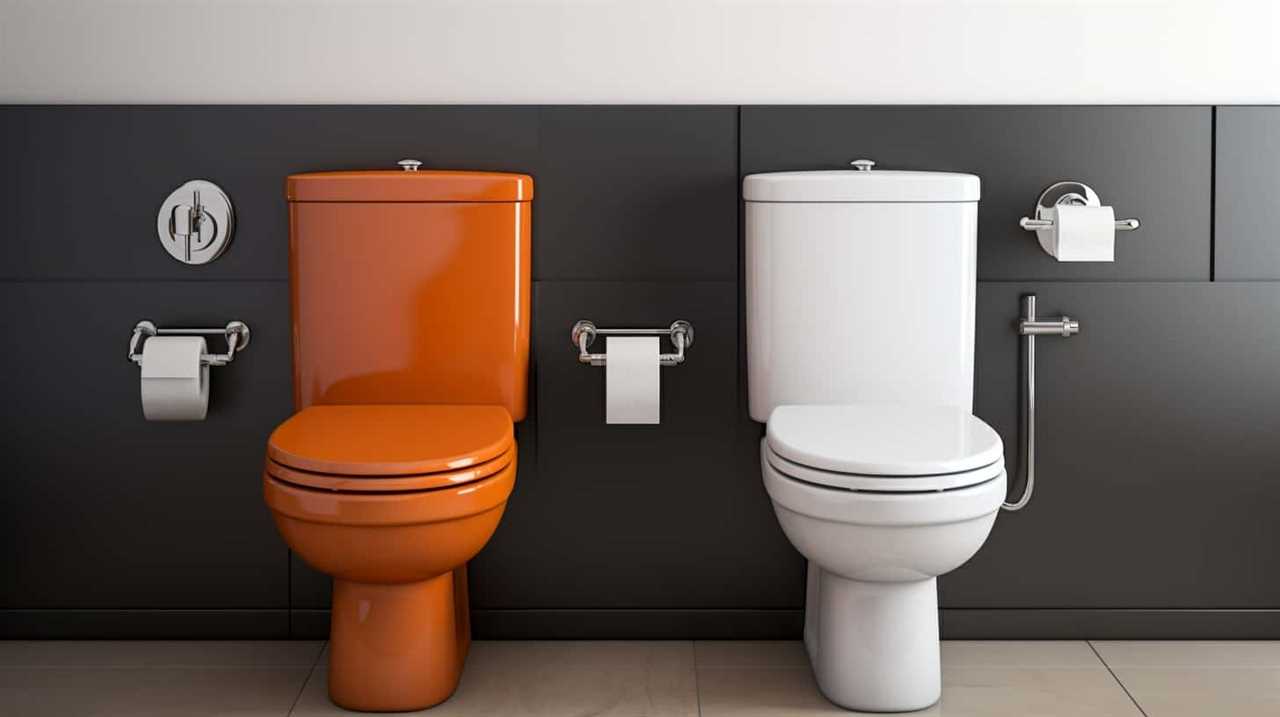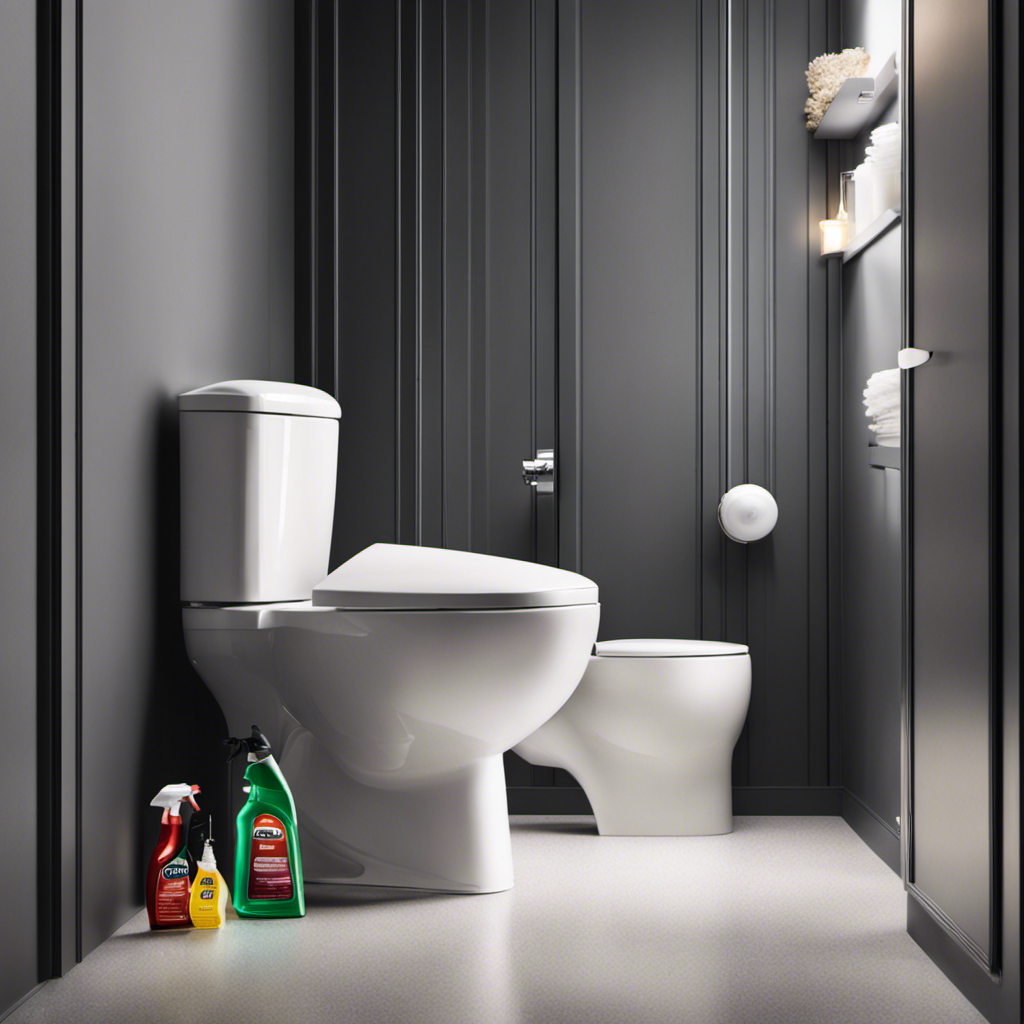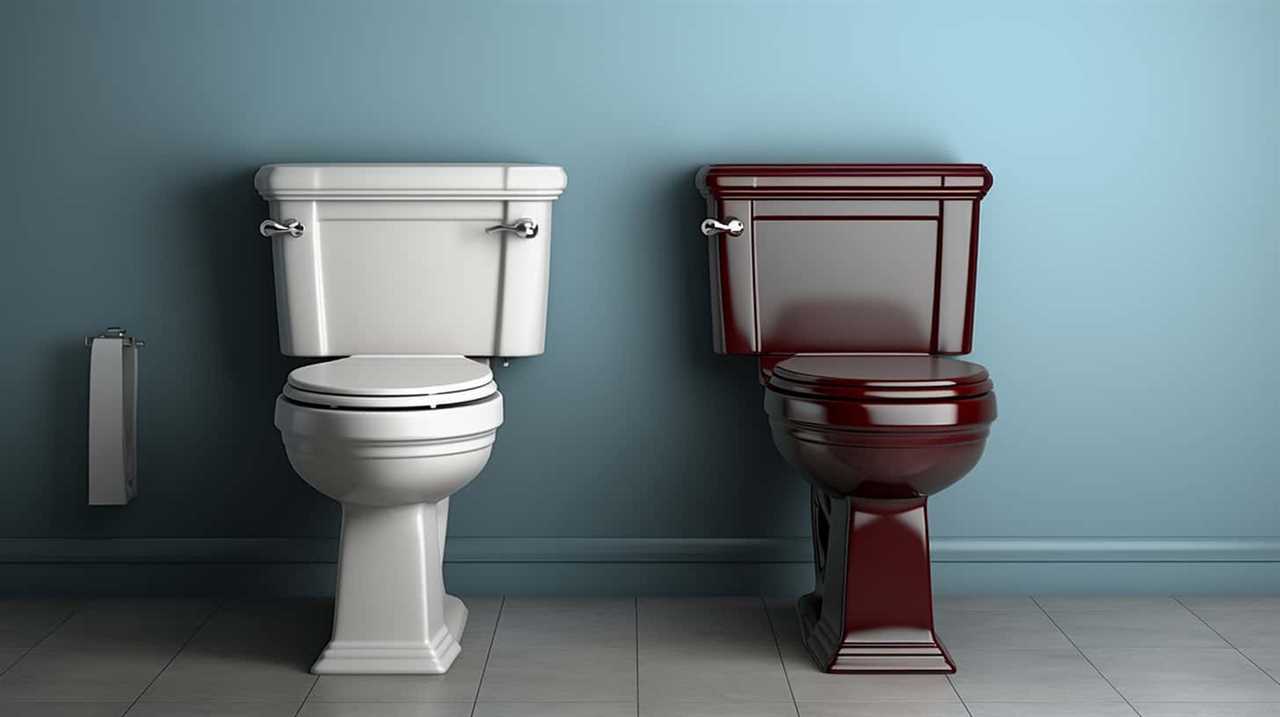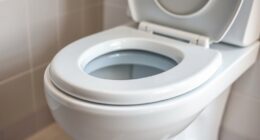Have you ever been puzzled by the need to double-flush our toilets to ensure everything is thoroughly cleared? It’s an irritating situation that can have us puzzled.
Well, fear not, for in this article, we will delve into the technicalities and analyze the possible reasons behind this phenomenon. From clogged drains to faulty flapper valves, we will explore the intricacies of toilet flushing and provide you with the mastery you seek.
Let’s dive in!
Key Takeaways
- Clogs or partial blockages in the toilet drain can cause the need for two flushes.
- Insufficient water in the tank can require two flushes to fully flush a toilet.
- A faulty flapper valve can cause the need for multiple flushes.
- Low water pressure can hinder the flushing process and require multiple flushes.
Clogged or Partially Blocked Toilet Drain
Sometimes, a clog or partial blockage in the toilet drain can cause the need for two flushes to fully clear the bowl. This issue is quite common and can be attributed to various factors related to toilet maintenance and plumbing solutions.

When a clog occurs, it restricts the flow of water and prevents the waste from being properly flushed away. Additionally, a partial blockage can result in inadequate water pressure, making it difficult to completely clear the bowl with just one flush.
To address this problem, it’s important to implement proper toilet maintenance practices, such as regular cleaning and avoiding flushing non-flushable items. In some cases, using plumbing solutions like a plunger or drain snake can help dislodge the clog and restore proper flushing functionality.
Insufficient Water in the Tank
We often find that the reason it takes two flushes to fully flush a toilet is due to insufficient water in the tank. This is a common issue that can be easily addressed through proper toilet maintenance.
Here are some key points to consider regarding water conservation and toilet maintenance:

- Check the water level in the tank: Ensure that the water level is at the recommended mark, as specified by the manufacturer. If it’s too low, the toilet may not have enough water to create the necessary force for a complete flush.
- Adjust the fill valve: If the water level is low, adjust the fill valve to allow more water to enter the tank. This will help increase the flushing power.
- Replace faulty components: If the fill valve or flapper is worn out or defective, it can cause insufficient water flow. Replace any faulty components to ensure proper water flow and flushing efficiency.
- Consider dual-flush toilets: These toilets have separate flush options for liquid waste and solid waste, allowing for water conservation by using less water for liquid waste.
- Regular maintenance: Regularly inspect and clean the toilet tank, flapper, and other components to prevent any blockages or water flow issues.
Faulty Flapper Valve
The faulty flapper valve can frequently cause the need for multiple flushes in order to fully flush a toilet. The flapper valve is a crucial component in the flushing mechanism of a toilet. Its purpose is to release water from the tank into the bowl when the flush lever is pressed.
Over time, the flapper valve can deteriorate, resulting in leaks or incomplete flushes. This can be due to wear and tear, mineral buildup, or improper installation. To resolve this issue, a flapper replacement is necessary. This involves shutting off the water supply, removing the old flapper valve, and installing a new one.
Regular toilet maintenance, including checking and replacing faulty flapper valves, can help ensure proper flushing performance and prevent the need for multiple flushes.
Low Water Pressure
To address the issue of multiple flushes, another potential cause could be low water pressure, which can hinder the proper flushing process. Low water pressure refers to a situation where there’s insufficient force in the water supply, leading to inadequate flushing power in toilets. This can be caused by various factors, including water supply issues and plumbing system problems.
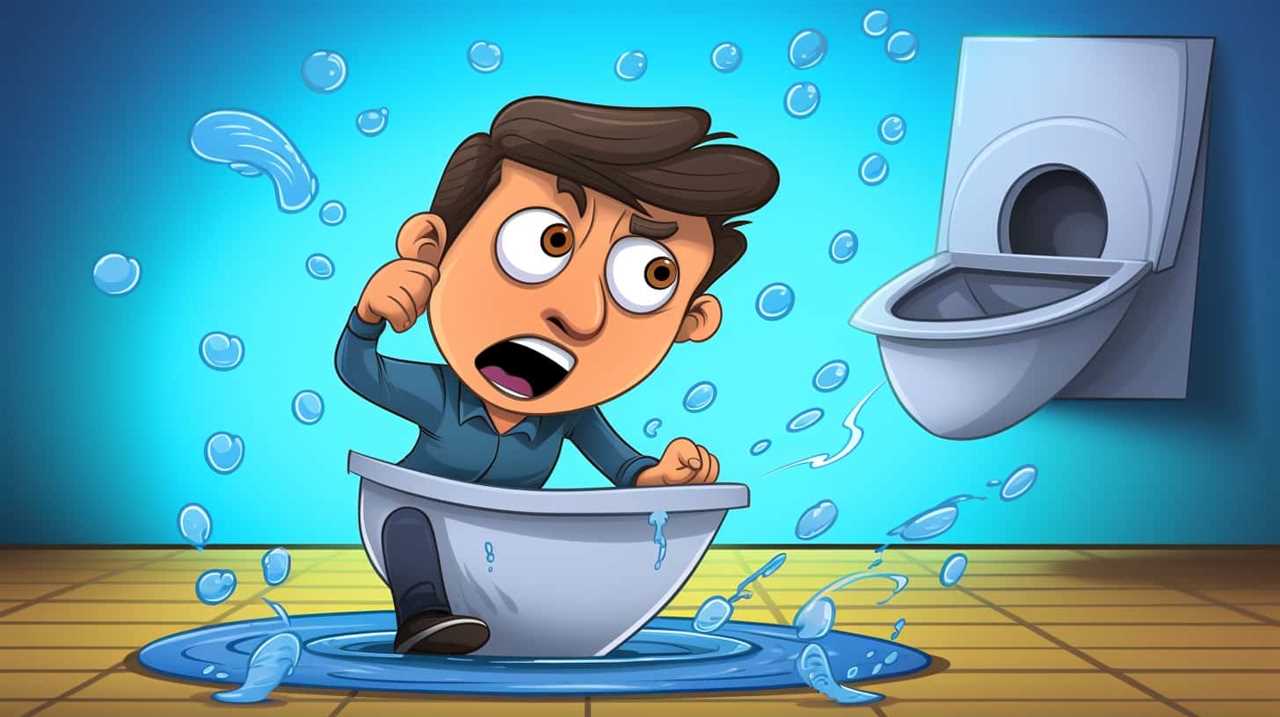
Here are five key points to consider:
- Insufficient water pressure may result from a clogged or damaged water line, reducing the flow of water into the toilet tank.
- A malfunctioning pressure regulator or pressure-reducing valve can also contribute to low water pressure, affecting the flushing efficiency.
- Poorly designed or outdated plumbing systems may struggle to maintain adequate water pressure, leading to ineffective flushing.
- Water supply issues, such as a high demand during peak usage times or maintenance work on the water lines, can temporarily lower the water pressure.
- It’s crucial to identify the root cause of low water pressure and address it promptly to ensure proper toilet flushing.
Understanding these factors can help you diagnose and resolve low water pressure problems, improving the flushing performance of your toilet.
Incorrect Toilet Bowl Design
Although it may not be immediately apparent, a potential reason for the need to flush the toilet twice could be due to an incorrect toilet bowl design. The shape of the toilet bowl and the water flow within it play a crucial role in ensuring an effective flush. A poorly designed toilet bowl may not facilitate the proper movement of water, leading to inadequate flushing.
To illustrate the impact of toilet bowl shape on water flow, consider the following table:

| Toilet Bowl Shape | Water Flow |
|---|---|
| Round | Restricted |
| Elongated | Improved |
In general, an elongated toilet bowl allows for better water flow compared to a round bowl. The elongated shape provides a larger surface area, enabling more efficient movement of water to carry away waste. On the other hand, a round bowl may restrict water flow, resulting in the need for multiple flushes.
Therefore, if you find yourself needing to flush the toilet twice, it might be worth considering the design of your toilet bowl and opting for an elongated shape to improve water flow and ensure a more effective flush.
Frequently Asked Questions
How Can I Prevent My Toilet Drain From Getting Clogged or Partially Blocked?
To prevent toilet drain clogs, regular maintenance is crucial. Properly disposing of waste, avoiding flushing non-flushable items, and using a plunger or drain snake when necessary are effective methods for maintaining a clear and functioning toilet drain.
What Are Some Signs of a Faulty Flapper Valve in a Toilet?
When replacing or maintaining the toilet flapper, signs of a faulty valve include water leaks, constant running, or incomplete flushes. Proper care and regular inspections ensure optimal performance and prevent double flushing.
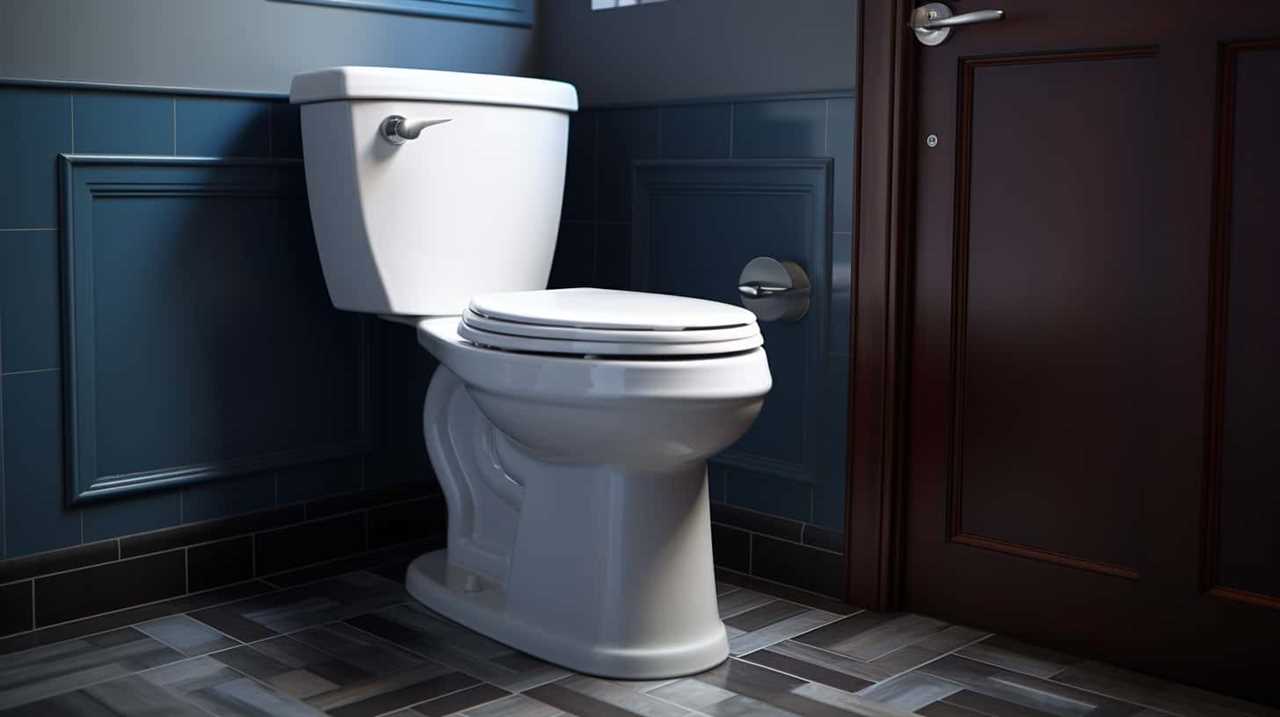
How Can I Increase the Water Pressure in My Toilet?
To increase toilet pressure and troubleshoot water flow, we can start by checking the water supply valve and adjusting it if necessary. We should also inspect the fill valve and clean or replace it as needed.
Can a Toilet Bowl With an Incorrect Design Affect Its Flushing Efficiency?
Toilet bowl design can impact flushing efficiency. Common flushing problems, such as the need for multiple flushes, may be caused by an incorrect design. Understanding these factors is crucial for mastering toilet performance.
Are There Any DIY Solutions to Fix Insufficient Water in the Toilet Tank?
To fix insufficient water in the toilet tank, we can try DIY solutions like checking for toilet tank leaks and insulating the tank. These steps can help improve flushing efficiency and prevent the need for multiple flushes.
Conclusion
In conclusion, the issue of needing to flush a toilet twice may be caused by a variety of factors such as:
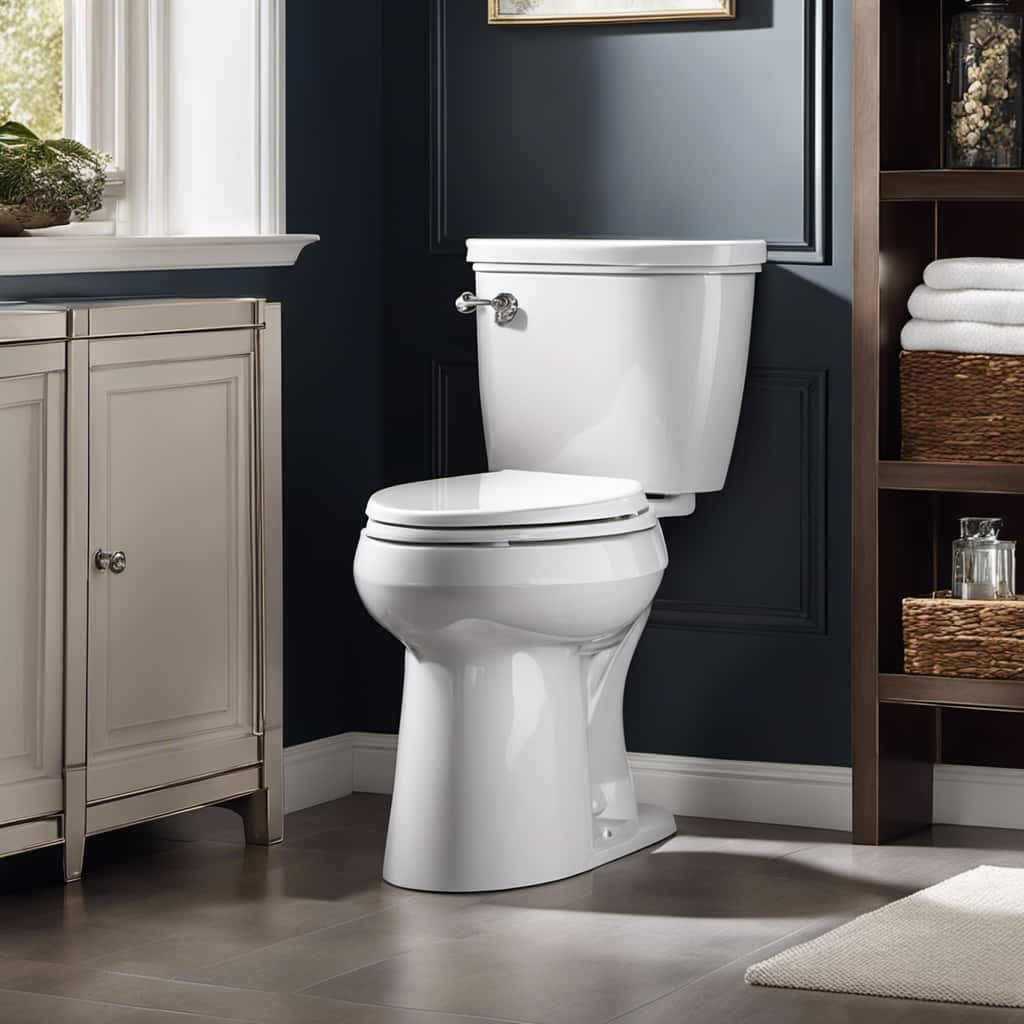
- A clogged or partially blocked drain
- Insufficient water in the tank
- A faulty flapper valve
- Low water pressure
- An incorrect toilet bowl design
It’s important to identify and address these issues to ensure proper flushing efficiency. By understanding the possible causes, you can take the necessary steps to resolve the problem and enjoy a fully functional toilet system.
